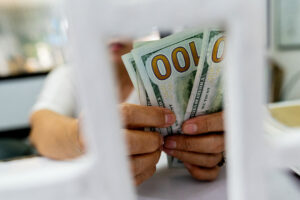




Quarterly Economic Growth Release: More BSP cuts to come
 DOWNLOAD
DOWNLOAD

Monthly Economic Update: Fed catches up
 DOWNLOAD
DOWNLOAD

Inflation Update: Steady and mellow
 DOWNLOAD
DOWNLOAD


PH dollar reserves dip in December

The Philippines’ dollar reserves slipped by 0.3% as of end-December, as the National Government paid some of its debt obligations, but still ended the year above the central bank’s $100-billion projection.
Preliminary data from the Bangko Sentral ng Pilipinas (BSP) showed the gross international reserves (GIR) fell to USD 102.45 billion as of end-December from USD 102.72 billion in November.
However, the end-December level of dollar reserves rose by 6.6% from USD 96.15 billion as of end-2022.
The GIR was also higher than the BSP’s end-2023 projection of USD 100 billion.
“The month-on-month decrease in the GIR level reflected mainly the National Government’s payments of its foreign currency debt obligations,” the BSP said in a statement late on Friday.
At its end-December level, the GIR is enough to cover 7.7 months’ worth of imports of goods and payments of services and primary income.
It is also equivalent to about six times the country’s short-term external debt based on original maturity and 3.8 times based on residual maturity.
Having an ample level of foreign exchange buffers safeguards an economy from market volatility and is an assurance of the country’s capability for debt repayment in the event of an economic downturn.
Rizal Commercial Banking Corp. Chief Economist Michael L. Ricafort in a note said that foreign exchange deposits and gold holdings of the BSP went down as of end-December despite the 1.8% month-on-month increase in global gold prices.
Based on BSP data, foreign currency deposits plummeted by 62.5% to USD 716.3 million as of end-December from USD 1.91 billion a month prior, and by 24% from USD 942.8 billion as of end-2022.
The country’s gold reserves were valued at USD 10.56 billion as of end-2023, lower by 2.4% than USD 10.82 billion a month earlier but up by 13.8% from USD 9.28 billion as of end-2022.
Mr. Ricafort said this was offset by an increase in foreign investments due to “the hefty gains in the US/global financial markets in November-December 2023.”
The BSP’s reserves in the form of foreign investments rose by 1.4% to USD 86.63 billion as of December from USD 85.42 billion as of November. This was also 6.2% higher than USD 81.37 billion seen a year ago.
According to the BSP, net international reserves inched up by 0.5% to USD 102.4 billion as of end-December from USD 101.9 billion a year ago.
Net international reserves are the difference between the BSP’s reserve assets (GIR) and reserve liabilities such as short-term foreign debt, and credit and loans from the International Monetary Fund (IMF).
The Philippines’ reserve position in the IMF dipped by 2% month on month to USD 771.4 million and by 2.3% from $789.8 million from a year ago.
Special drawing rights held by the Philippines — or the amount the country can tap from the IMF — stood at USD 3.78 billion in December, falling by 0.3% month on month but 0.5% higher than USD 3.76 billion in the previous year.
Mr. Ricafort also noted that the proceeds of the National Government’s Islamic bonds have already been added in the country’s dollar reserves as of December.
In December, the Treasury department said it has raised USD 1 billion from the sale of 5.5-year Sukuk bonds. The issued bonds were met with high demand as bids reached nearly five times the offer.
For the coming months, proceeds from investment banking activities abroad and dollar bond issuances by the National Government may continue to support the country’s GIR, Mr. Ricafort said
However, this could be offset by government plans to reduce foreign borrowings and better manage foreign exchange risks, he added.
The BSP is expecting to have USD 102 billion in dollar reserves by end-2024. — Keisha B. Ta-asan
This article originally appeared on bworldonline.com





 By BusinessWorld
By BusinessWorld